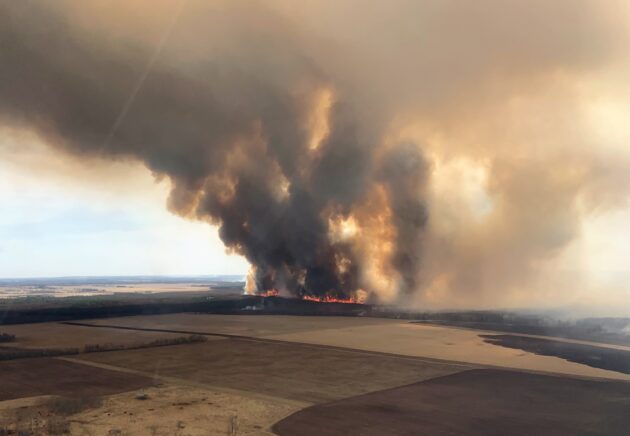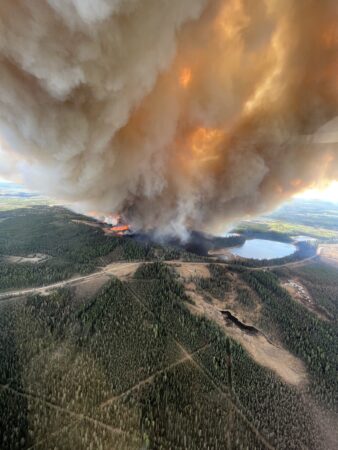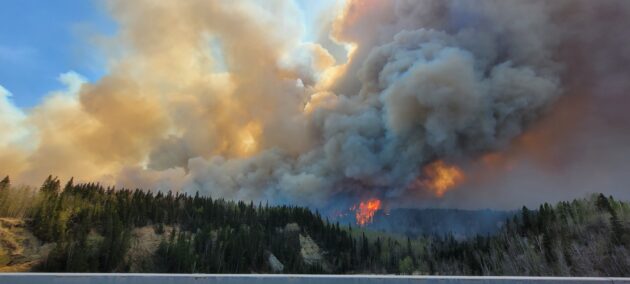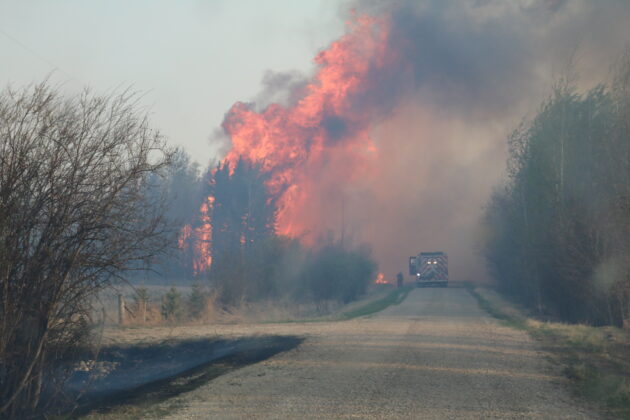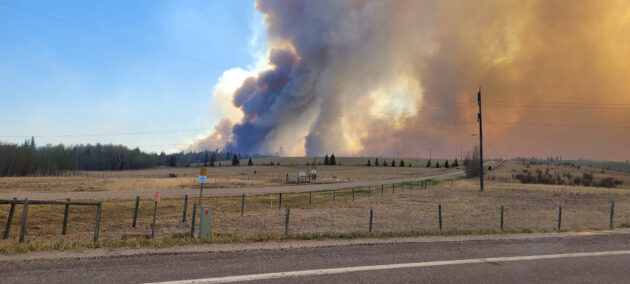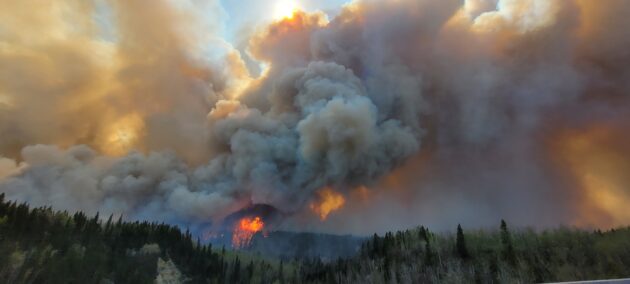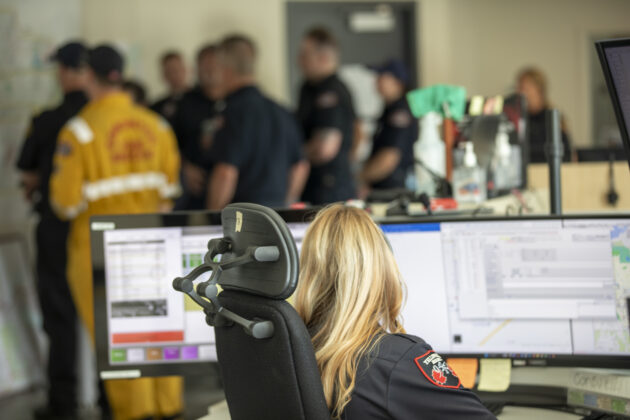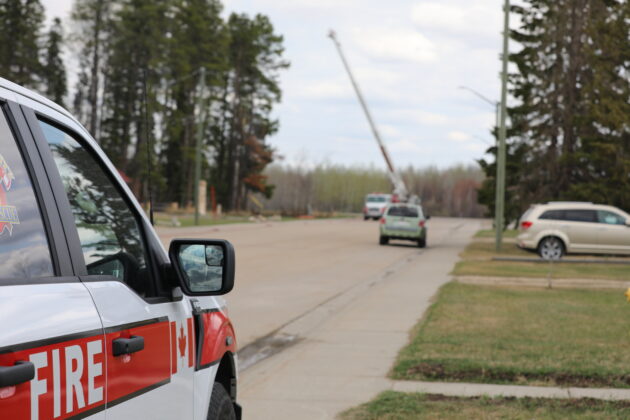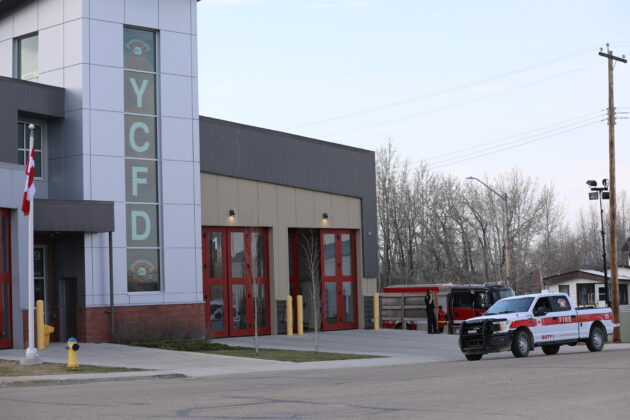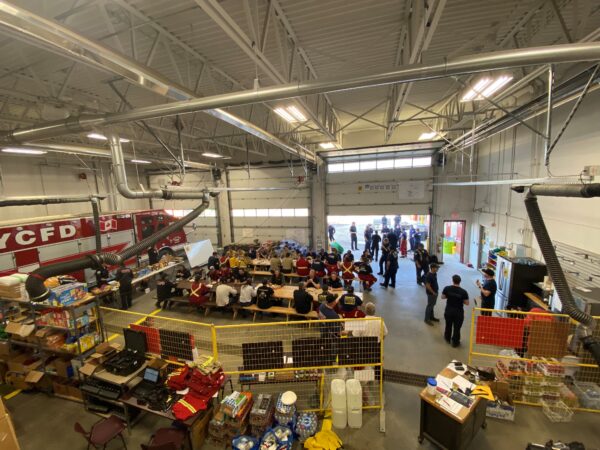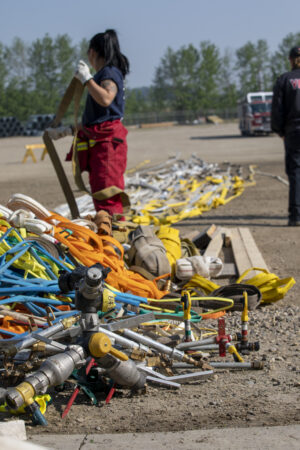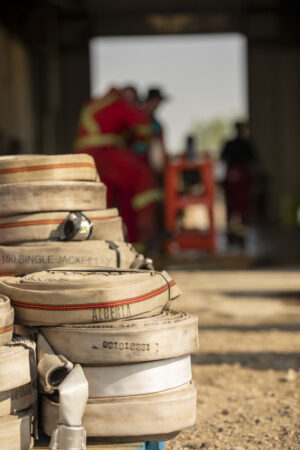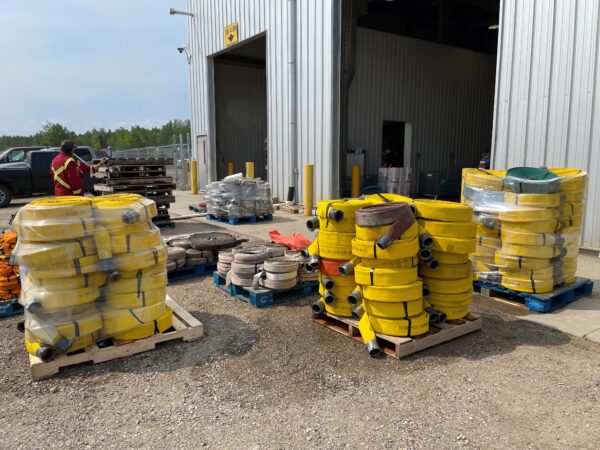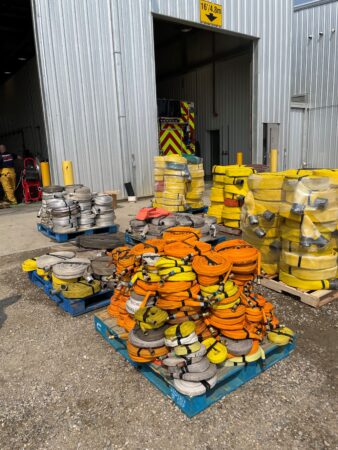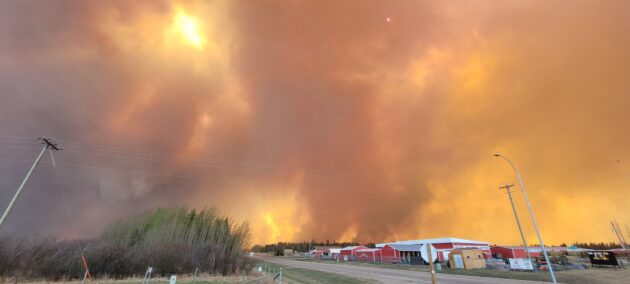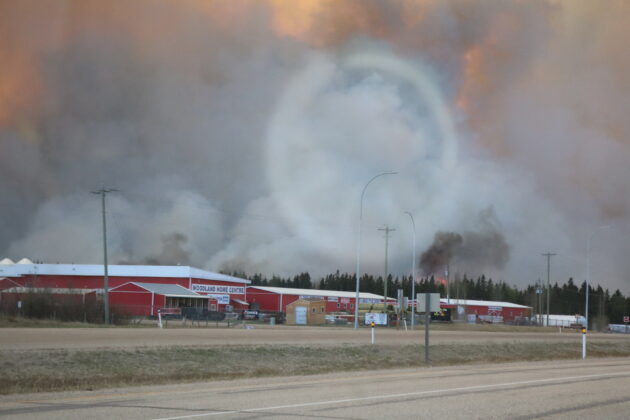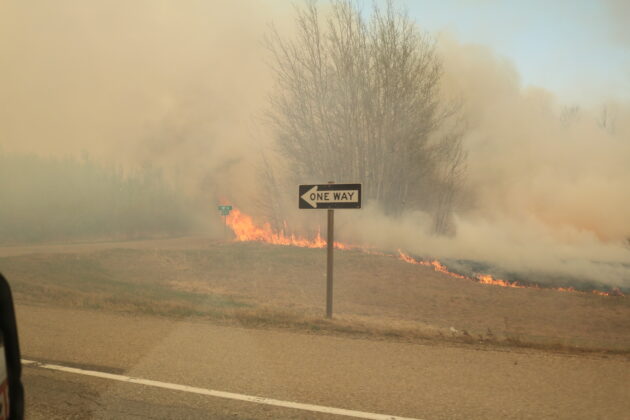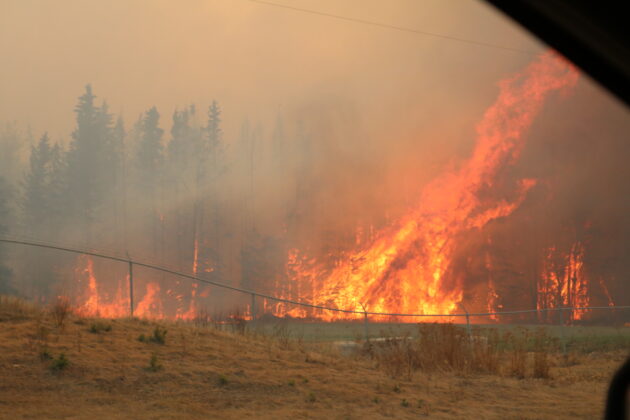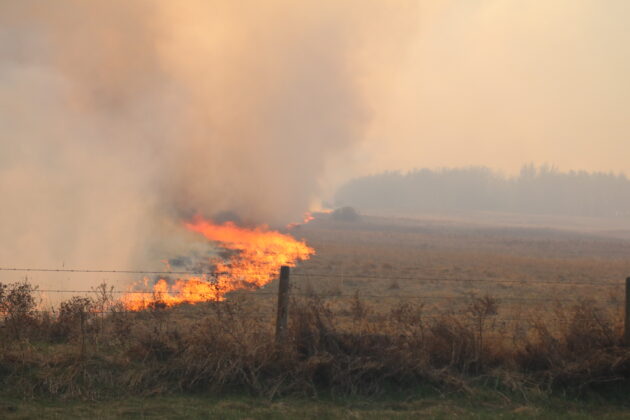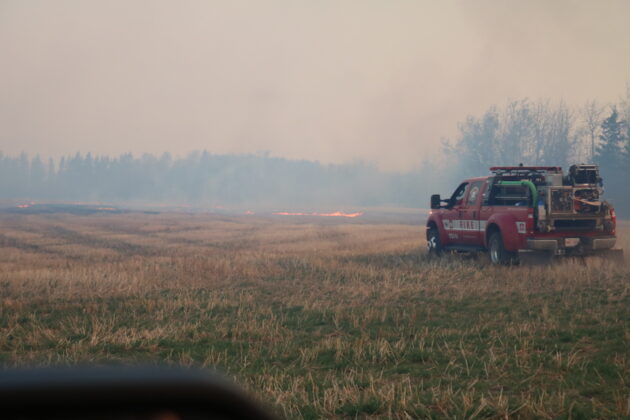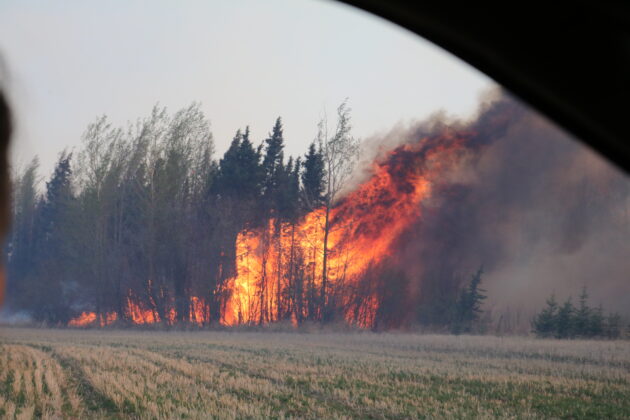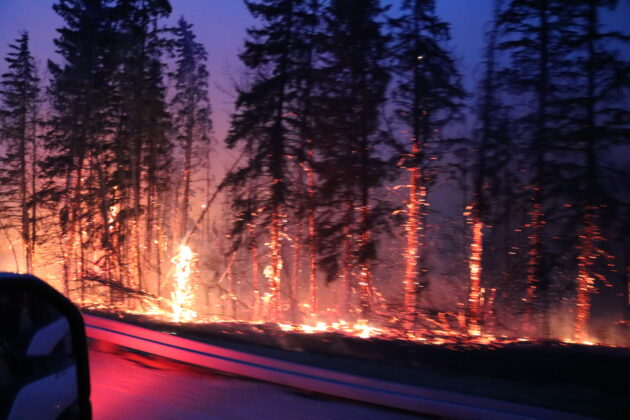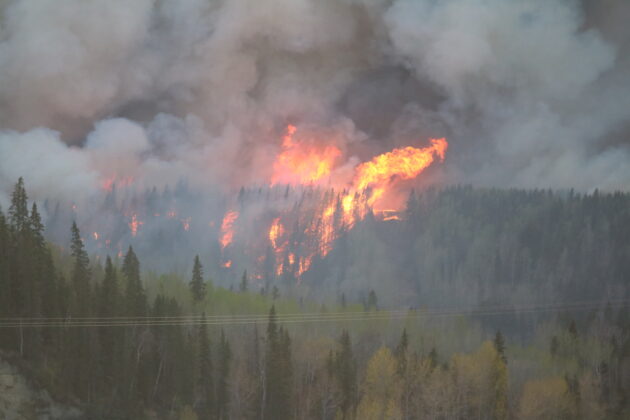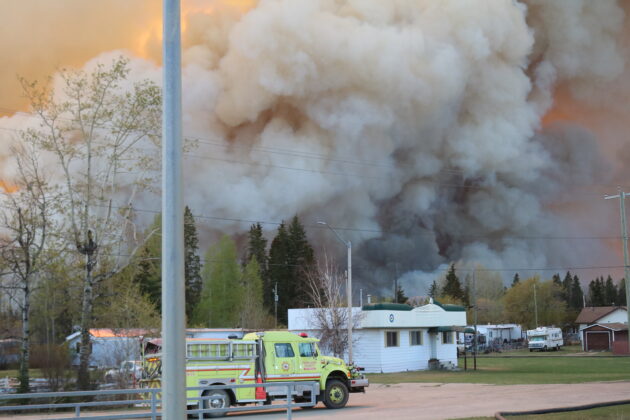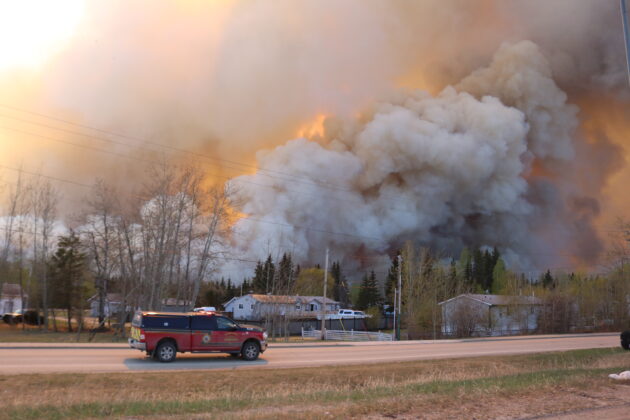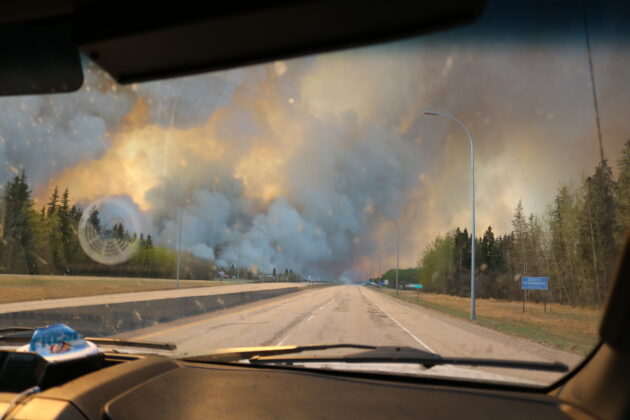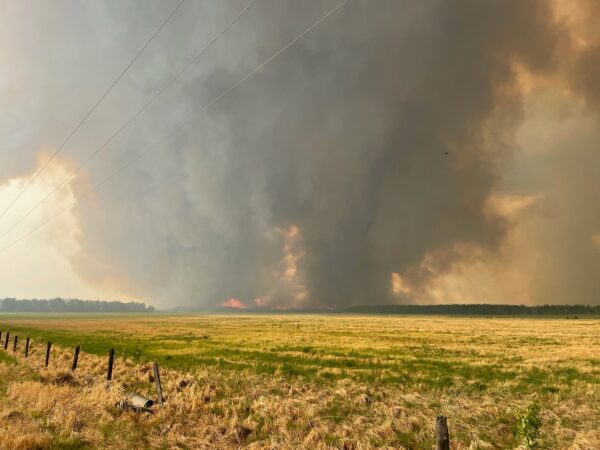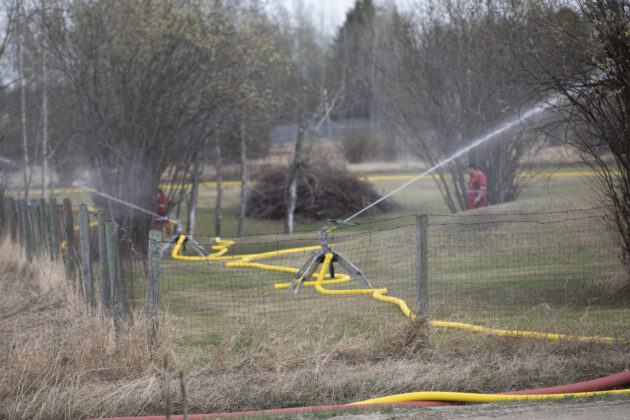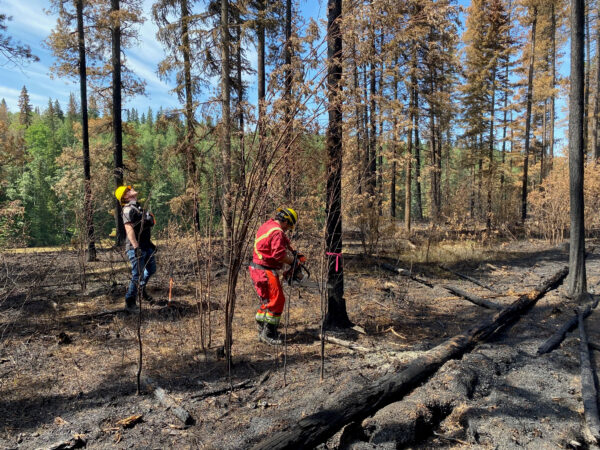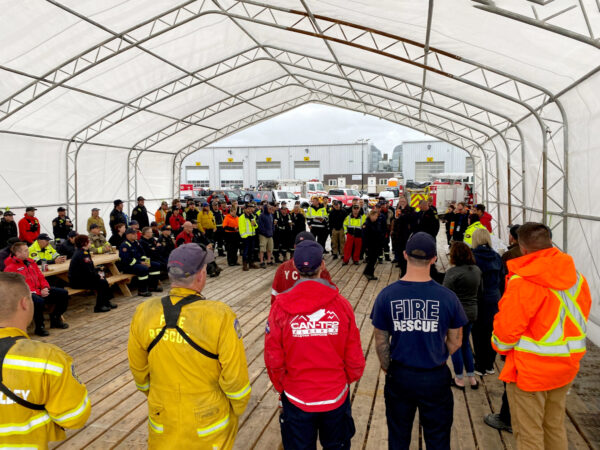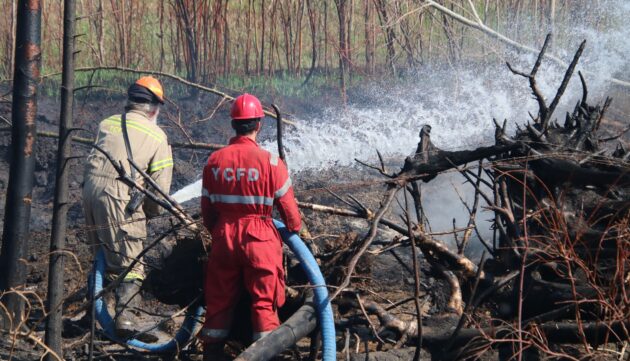
Amidst the flames: Inside Yellowhead County’s gruelling battle against the 2023 wildfire blaze
By Brittani Schroeder
Features Alberta Canada wildfires canadian firefighter editors pick fire chief fire department firefighter training wildfire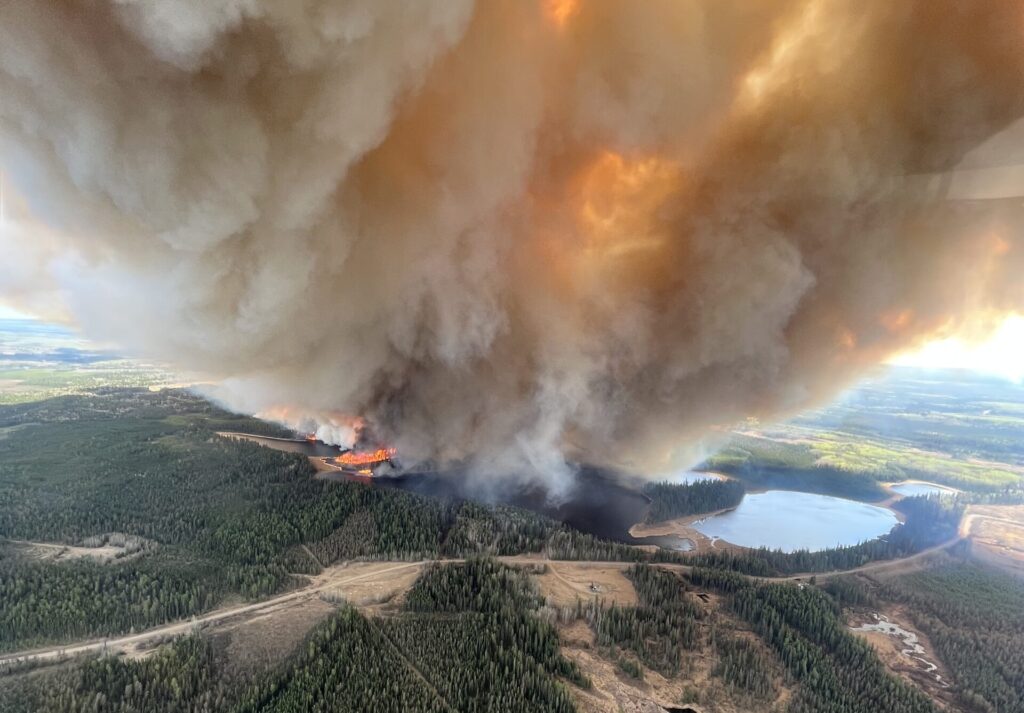 Photo: Alberta Wildfire
Photo: Alberta Wildfire Amidst an unforgiving blaze that swept through Yellowhead County, Alta., in 2023, a relentless battle unfolded as firefighters confronted one of the most challenging wildfire seasons in recent memory. There was no shortage of heroic efforts, strategic firefighting maneuvers and lessons learned from the intense fires that tested those on the front lines.
The early days of the blaze
On April 29, 2023, Yellowhead County Fire Department (YCFD) started to receive reports of a spreading wildfire in the eastern region, and it was quickly approaching a residential area. Approximately two hours later, a second wildfire was reported 70 km away. This wildfire was quickly burning toward two hamlets, which caused an immediate evacuation, including seniors’ lodges and schools. Shortly after, there was a third reported wildfire that was burning out of control in a rural populated area.
“When the first call came in, I responded towards the fire. It was already growing, there was a large column of smoke coming from it and I kept thinking, ‘What is it going to take to put that fire out, or contain it? What equipment would we need out there?’” said Chief Albert Bahri, YCFD, who also acted as incident commander during the wildfire.
The fires had begun so quickly that it was hard for crews to get a handle on them. The wind quickly fanned the flames and created 1,000 kilometres of fire line, which overwhelmed the region and the fire fighting efforts.
Yellowhead County is divided into two zones: a green zone and a white zone. In the green zone, Alberta Forestry is responsible for the wildland firefighting and YCFD takes care of structural and asset protection. In the white zone, YCFD does everything. With the help of the Emergency Coordination Centre (ECC), fire crews needed to quickly establish a course of action.
YCFD are structural firefighters, who typically only assist with the initial attack of wildland fires before Alberta Forestry takes over the scene. “There were a lot of things we had to learn on the fly, but all the different crews banded together to fight this fire,” said Captain Corinne Grant, operations Section chief.
Even in the early days of the fight, Chief Bahri shared that he felt like there was always a shortage of people and resources. YCFD only has 13 full-time firefighters and just over 80 volunteer firefighters. With the large number of wildfires active in the province, fire fighting crews and accessible provincial resources became very limited. Combining this with the lack of spring rain and the strong winds, the fires ran out of control. YC Mayor Wade Williams signed many “State of Local Emergency” declarations, the first on April 30.
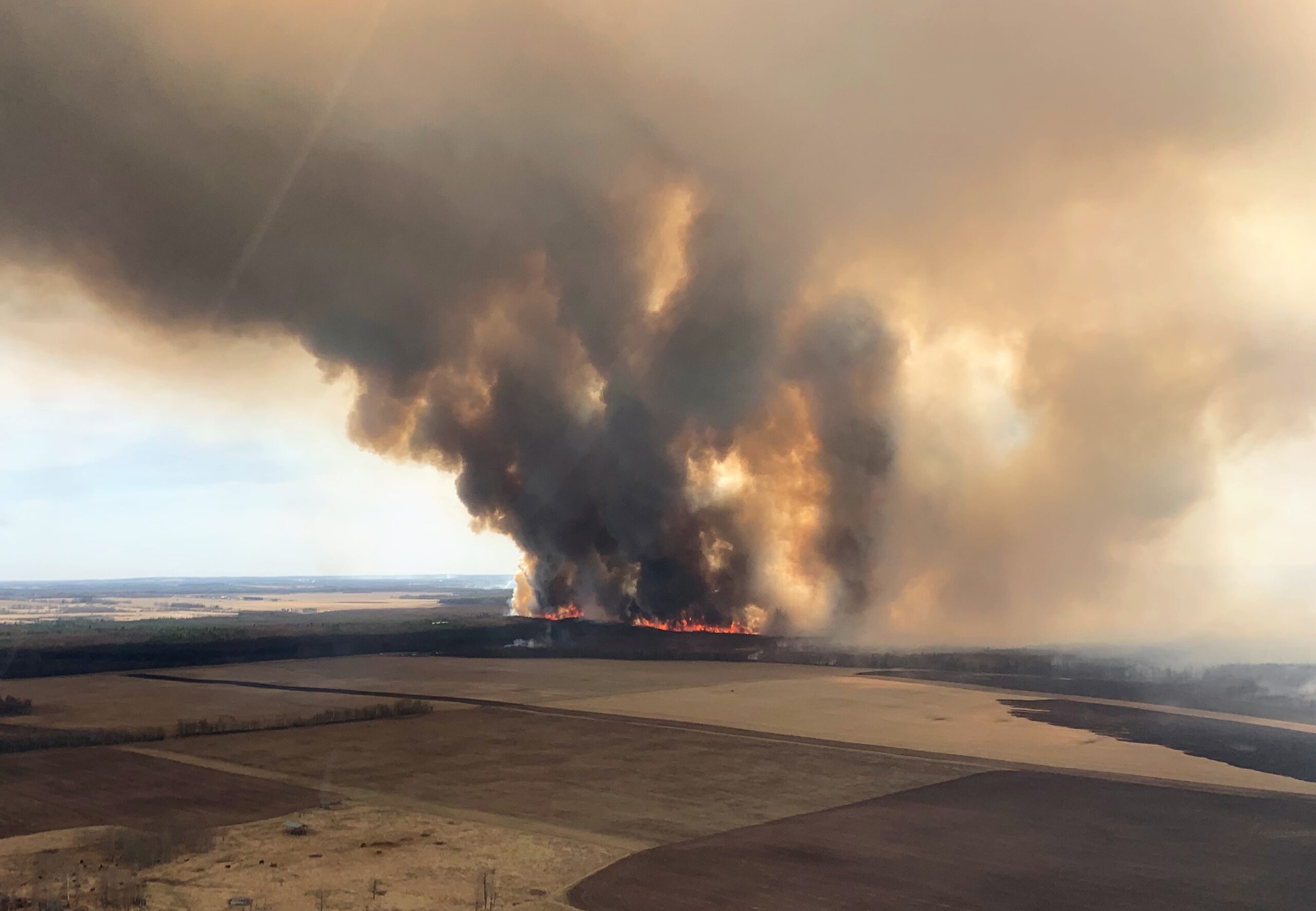
Photo: Alberta Wildfire
The logistics behind the fire fighting
Putting the size of the county into perspective, Chief Bahri shared that Yellowhead County is 22,238 square kilometres in size. The entire province of Nova Scotia is 55,284 square kilometres. “Our fires covered over 307,000 hectares, equal to 3,070 square kilometres, which is 3.9 times the size of New York City,” he said. Multiple fires had combined and raged on for almost 60 days.
Because of the sheer size of the County—the third largest in Alberta—it took considerable time to get resources from one site to the next. “With five major fires threatening separate areas, our resources were sometimes separated by an hour’s travel time. We needed to stay coordinated, and communication was key to making sure everything got to where it needed to be,” said Captain Grant.
YCFD was not in this fight alone—they received support from Alberta Wildfire and BC Wildfire, along with many municipal and private firefighters from across the province. Firefighters who were experts in operations, wildfire mapping and activity assessment, and public information also came to help from the United States, Australia, New Zealand and South Africa. Personnel from several Alberta Emergency Disaster agencies, the Alberta Sheriffs Agency, the RCMP, Canada Task Force 2 and the North Central Regional Emergency Management team also provided support.
“Nothing was stopping that fire.” – Chief Albert Bahri
On day seven of fighting the wildfires, a unified command was created to coordinate evacuation efforts. A wildfire in the southern region of YC grew larger than the City of Regina in less than 24 hours and was able to travel over 20 kilometres in five hours, making the evacuation of residents essential. Complicating these efforts was the closure of Highway 16, a major corridor running from Saskatchewan through Alberta into British Columbia, and the CN Rail service. “How can you evacuate people when the major travel arteries are closed? How can you get additional resources? So we worked hard to get things under control enough to open those routes again,” said Chief Bahri.
Another challenge faced was the access to hotels, grocery stores and gas stations. “Because everyone has left, how do we get food to feed our personnel? How do we get fuel to work our equipment? Where do we get new hoses, coveralls and fittings? Where do we get extra water tanks?” asked Captain Heidi van der Schoot, logistics section chief. “We were lucky when the evacuated residents gave us access to their stores and supplies so that we could support our crews.”
When the fire crews needed additional support, Captain van der Schoot put out requests for them right away. “When we couldn’t get the extra resources, like water pumps, for example, it wasn’t because we weren’t asking for them—it’s because they weren’t available. Every available resource was being utilized somewhere else because the western half of Canada lit up at the same time,” said Chief Bahri.
Protecting the people
For the first few weeks, there was no downtime for members of YCFD.
“We were doing 14-hour days because our community was burning down. A lot of people wanted to keep going – keep fighting. I was one of them. I didn’t want to relinquish the fight,” said Chief Bahri.
Lieutenant Dylan Doane found going home hard. “Our homes were smoke-filled, so you didn’t want to stay at home, but it felt wrong to go anywhere or do anything else besides fire fighting,” he said.
“As leaders, it’s hard to take days off because we’re the ones with the knowledge of the area and what’s going on. It’s difficult to hand that off to someone else and just go home for a day,” said Captain Grant. “Even though we could see the fire raging in the distance, it was 2 a.m. and our crew had to go home to get some rest. We needed them back in the fight in the morning, so I wanted to give them time to regroup. They didn’t want to leave, but I needed to protect my people.”
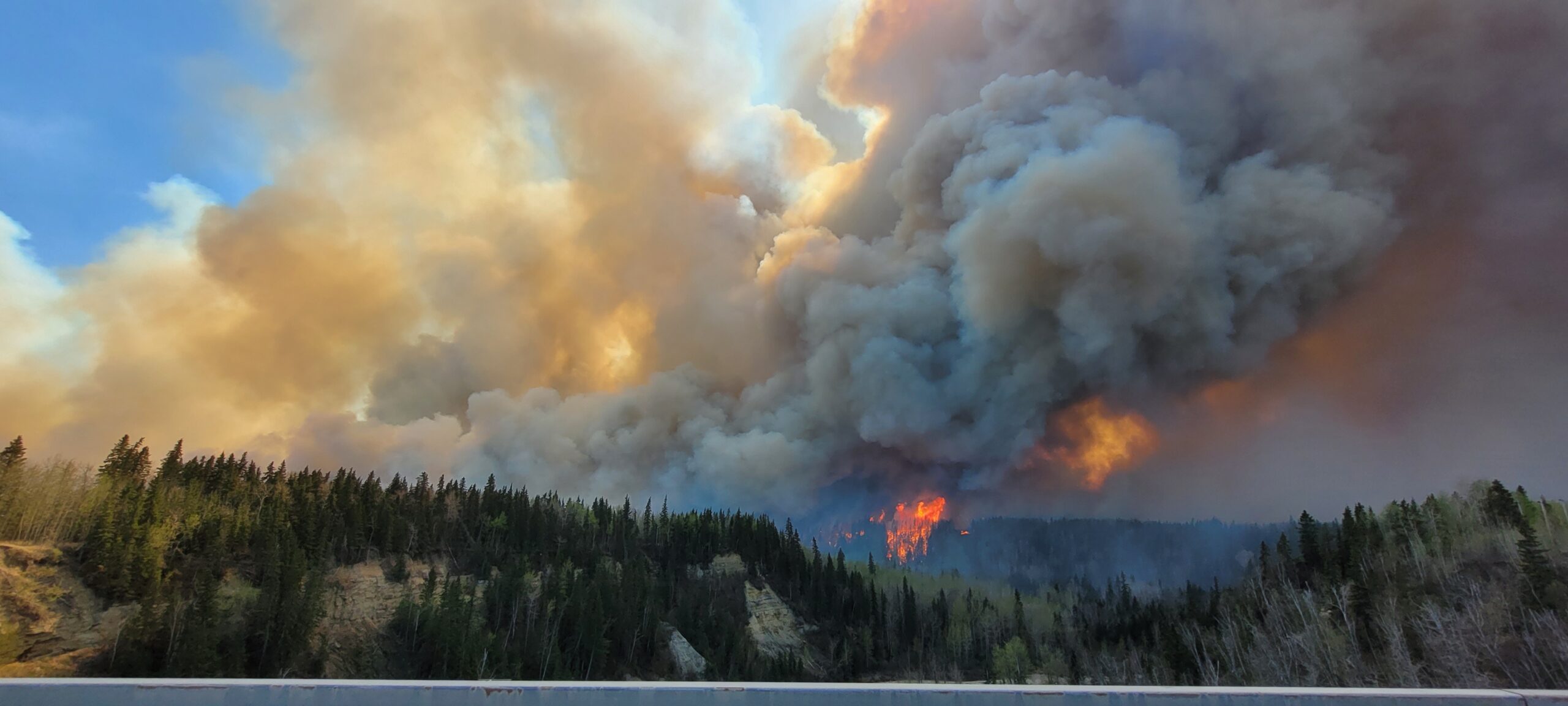
Photo: Yellowhead County
The proper training
YCFD had to increase their knowledge level, as a department, on how to perform sustained action on a wildfire for long periods as, typically, YCFD does the initial attack and then hands off to Wildfire.
“We had some amazing crews coming in from other municipalities as well as the wildfire teams, and we worked side-by-side with them. We taught them things, they taught us things, and everyone learned throughout this situation. We leveraged the people that came in as much as we could. We really picked their brains,” said Captain Grant.
During any downtime, YCFD took advantage and organized special training days. An example of a training day included learning from a structure protection specialist from B.C.
“These training days gave us simple tricks to save time and be more efficient in our work. Anything that could help us get through a fire quicker,” said Lieutenant Doane.
Chief Bahri extends his gratitude to all the teams that worked together on this fire. “To see all the different agencies come in, who have never worked together before, and work so well as one team was hugely beneficial. Kudos goes out to the Forestry team, too—we don’t normally go deep into the woods with them, but we did this time. We applied their mentorship to what we were doing, and they in turn applied our mentorship on the structural protection side of things. It was incredible,” he said.
Switching gears
The fight against the wildfires continued for almost eight weeks until some much-needed rain arrived on June 19. Soon another disaster struck: serious flooding, late-spring snowstorms and the threat of tornadoes, which resulted in more evacuations and inaccessible areas due to damaged roads and bridges.
Soon fire fighting efforts were severely hindered due to the wet, muddy conditions. Fire guards and other wildfire-fighting methods were washed away. YC firefighters and other staff worked around the clock to ensure they had what they could to avert these disasters in the future.
“Literally overnight, the fireground we were just battling on was suddenly underwater. Firefighters were now doing water rescue, and they pivoted like there was no question about it,” said Chief Bahri.
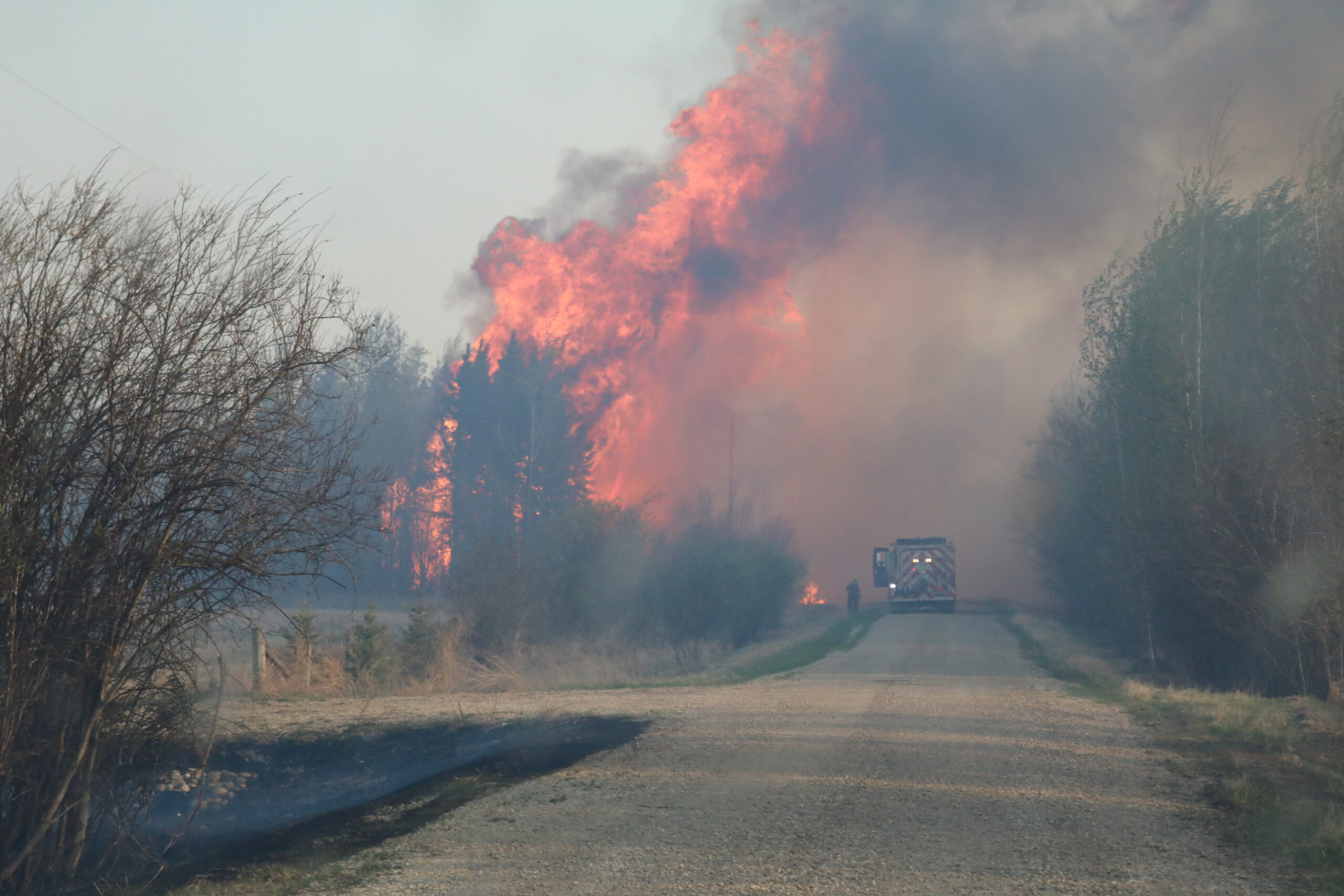
Photo: Yellowhead County
Lessons learned
After the worst was over and operations returned to a state of normalcy, YCFD knew they needed to actively prepare for the next emergency. This included looking at available resources and the accurate timelines for acquiring them for YC. “The biggest lesson learned was to not wait; make those calls for more resources immediately. Worst case, you don’t use it and you can always send it back,” said Chief Bahri. He recalled that in YCFD’s existence, they had never dealt with anything of this scale before, and the experience felt like a trial by fire.
In terms of resources, Captain Grant said that nothing was unreasonable. “You might think a resource is too excessive on a normal day, but when you’re fighting something as big as these wildland fires, nothing is outside the scope of possibilities,” she said.
Looking back at spring 2023, from the fires to the floods and the snowstorm, Chief Bahri credits a lot of YC’s success to the Municipal Emergency plan approved by Council that had been in place for such an occasion. “These plans are reviewed regularly, and we train for any outcome. Our plan worked, people showed up in droves to help and there were no major injuries aside from a firefighter’s hand needing stitches. Our teams had confidence in our emergency plan, and we made informed decisions because of it. Is there more training we can do? Absolutely. But we were very successful all the same.”
Resiliency for 2024
If there is ever a choice between stopping a raging wildfire or having some free time, the firefighters of YCFD will always serve their community first.
“They come first. It’s what we’re here to do: protect them,” said Lieutenant Doane.
“It’s the reason we’re firefighters – we want to help. It was even easier once our families were evacuated because then we didn’t have to worry about spending all our time on the front lines,” said Captain Grant.
“Resiliency is a big word in the fire service, along with dedication and a lot of others that go along with it. Whether you’re a career or volunteer firefighter, it doesn’t matter—you’re dedicated to serving your community,” said Chief Bahri. “Ultimately, we came together as a community. We ate, slept and fought together. Throughout the emergency, we had at least 750 firefighters come through here to help. It was like a community within a community event.”
As YCFD looks forward to the possibilities of the 2024 wildfire season, they are staying positive. While the County didn’t get snow until the end of December 2023, they see it as no predictor for what the spring weather will be like. “The weather is going to do what the weather does, and we will deal with it. We will be prepared no matter what,” said Captain Grant.
Chief Bahri also sees no reason to scare YC residents. Since last year’s fires, community members have been hyper-vigilant – when they see any type of smoke in the air, YCFD is immediately called to check it out. “Are we concerned? Absolutely. Do we have plans in place? Absolutely. What we can’t predict, we have to prepare for,” he said.
Print this page
